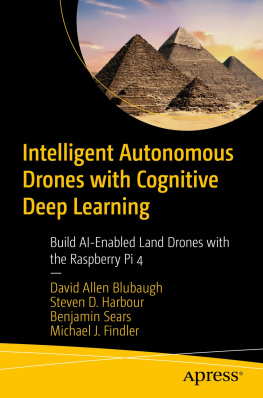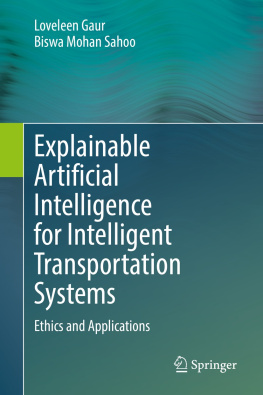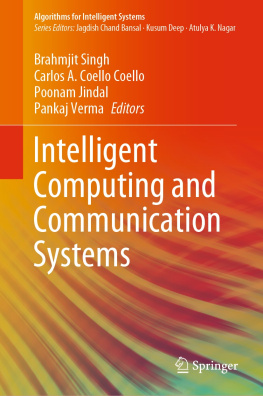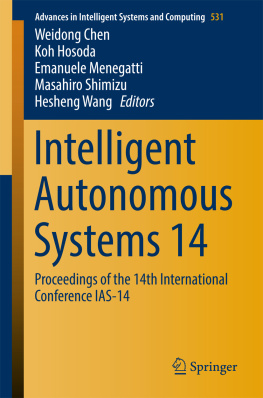Contents
List of Figures
List of Tables
Guide
Pagebreaks of the print version

Intelligent Robotics and Autonomous Agents
Edited by Ronald C. Arkin
A complete list of the books in the Intelligent Robotics and Autonomous Agents series appears at the .
Neurorobotics
Connecting the Brain, Body, and Environment
Tiffany J. Hwu and Jeffrey L. Krichmar
The MIT Press
Cambridge, Massachusetts
London, England
2022 Massachusetts Institute of Technology
All rights reserved. No part of this book may be reproduced in any form by any electronic or mechanical means (including photocopying, recording, or information storage and retrieval) without permission in writing from the publisher.
The MIT Press would like to thank the anonymous peer reviewers who provided comments on drafts of this book. The generous work of academic experts is essential for establishing the authority and quality of our publications. We acknowledge with gratitude the contributions of these otherwise uncredited readers.
Library of Congress Cataloging-in-Publication Data
Names: Hwu, Tiffany, author. | Krichmar, Jeffrey L. author.
Title: Neurorobotics : connecting the brain, body, and environment / Tiffany Hwu and Jeff Krichmar.
Other titles: Intelligent robotics and autonomous agents
Description: Cambridge, Massachusetts : The MIT Press, [2022] | Series: Intelligent robotics and autonomous agents | Includes bibliographical references and index.
Identifiers: LCCN 2021060534 (print) | LCCN 2021060535 (ebook) | ISBN 9780262047067 (hardcover) | ISBN 9780262370530 (epub) | ISBN 9780262370547 (pdf)
Subjects: MESH: Neurosciencesmethods | Roboticsmethods | Machine Learning | Equipment Design
Classification: LCC QP360.7 (print) | LCC QP360.7 (ebook) | NLM WL 26.5 | DDC 612.80285dc23 /eng/20220131
LC record available at https://lccn.loc.gov/2021060534
LC ebook record available at https://lccn.loc.gov/2021060535
d_r0
Contents
List of Figures
Grey Walters tortoises. Left: Grey Walter and his wife Vivian with the Elsie and Elmer tortoises. Right: Labeled photo of Elsie without her shell. Photos taken from http://cyberneticzoo.com.
Braitenbergs vehicles 2 and 3. Each vehicle has two light sensors and two motors attached to wheels. Plus signs ( + ) denote excitatory connections, and minus signs () denote inhibitory connections.
Webots simulation of Braitenbergs vehicles. The blue robot either approaches or avoids the light source (sun symbol). The yellow rays emanating from the robot show the angle of the robots light sensors.
(A and B) Unfriendly and (CE) friendly robots in entertainment. A, The Terminator cyborg; B, the android from Ex Machina; C, the robot from Lost in Space; D, Wall-E (Waste Allocation Load Lifter Earth-Class); E, the TARS robot in Interstellar.
Sensors in biology (top) and for robotics (bottom). Seeing: Three-dimensional vision can be mimicked with stereo cameras (eYs3D stereo camera, Sparkfun Electronics). Hearing: Two ears for hearing and sound localization can be realized with binaural microphones (from 3Dio). Touching: Fine touch can be realized with artificial fingertips (adapted from Bologna et al. [2011]). Feeling motion: The inner ear or vestibular system, which provides a signal of self-motion, can be achieved with an inertial measurement unit.
Control levels for autonomy. Redrawn from Bekey (2017).
Schematic for self-monitoring systems in biology and in engineering. On the left are terms and regions derived from neuroscience. On the right are terms adapted from autonomous robots but could be applied to many embedded systems. Blue: low-level sensory processing and motor control. Green: intermediate-level homeostasis, maintenance, and monitoring. Orange: high-level planning, adapting, and goal-driven behavior. From Chiba and Krichmar (2020).
The number of neurons and synapses in different organisms. Adapted from http://en.wikipedia.org/wiki/List_of_animals_by_number_of_neurons.
A, Cerebellar Purkinje cell. B, Motoneuron from the spinal cord. C, Neostriatal spiny neuron from cortex. D, Axonless interneuron from locust.
Generation of an action potential. A, The membrane potential, Em, is measured in millivolts (mV). Because of differential chemical and concentration gradients of ions inside and outside the cell, the neuron is at rest around 70 mV. An input that causes the neuron to fire an action potential results in the Em rapidly increasing to about + 30 mV and decreasing to below its resting state. B, If this were a neuron in the spinal cord that gets muscle length as input, a stretching of the muscle would result in a train of spikes. C, One of the action potentials from the spike train.
Leaky integrate-and-fire (LIF) neuron. Top, Response of the LIF neuron to an injection current, I, equal to 1.6. Bottom, Firing rate response over a range of injection currents.
The synapse. On the presynaptic neuron, the axon terminates. Synaptic vesicles move to the edge of the axon terminal and release their neurotransmitters into the cleft. Receptors on the postsynaptic neuron receive the neurotransmitter, causing the membrane potential to either increase (excitatory synapse) or decrease (inhibitory synapse) the membrane potential of the postsynaptic neuron.
Long-term potentiation (LTP) can be achieved with a strong rapid pulse of activity. Long-term depression (LTD) can be achieved with a slower pulse of activity.
Spike timingdependent plasticity (STDP). Long-term potentiation (LTP) and long-term depression (LTD) are measured by changes in the excitatory postsynaptic current (EPSC). LTP occurs if the presynaptic spike precedes the postsynaptic spike. LTD occurs if the postsynaptic spike precedes the presynaptic spike. The amplitude of change is larger if the events are closer in time, and the amplitude of change falls off exponentially with time.
The Watts-Strogatz model and the generation of small-world networks. The model begins with a regular lattice network in which each node is placed along the circumference of a circle and connected to its k nearest neighbors. Edges are rewired uniformly at random such that at zero probability, p = 0, the network is still a lattice and at 100 percent probability, p = 1, the network is random. Intermediate values of p result in small-world networks with local clustering and short path lengths. Adapted from Watts and Strogatz (1998).
The major anatomical components of the nervous system and their functional relationships. A, The division between the central nervous system and the peripheral nervous system. B, The different divisions of the nervous system. From figure 1.12 in Purves et al. (2017).
Structure of the neocortex. A, Association cortex shown in blue. Primary sensory and motor cortex shown in yellow. B, A cortical column. C, Lateral and sagittal views of the cortex with Brodmann area numbers. From figure 27.1 in Purves et al. (2017).
Motor and touch maps in cortex. Both the somatosensory and motor cortex have maps of the body. A, Motor cortex. Stimulating different parts of the motor cortex will cause movements of specific parts of the body.










